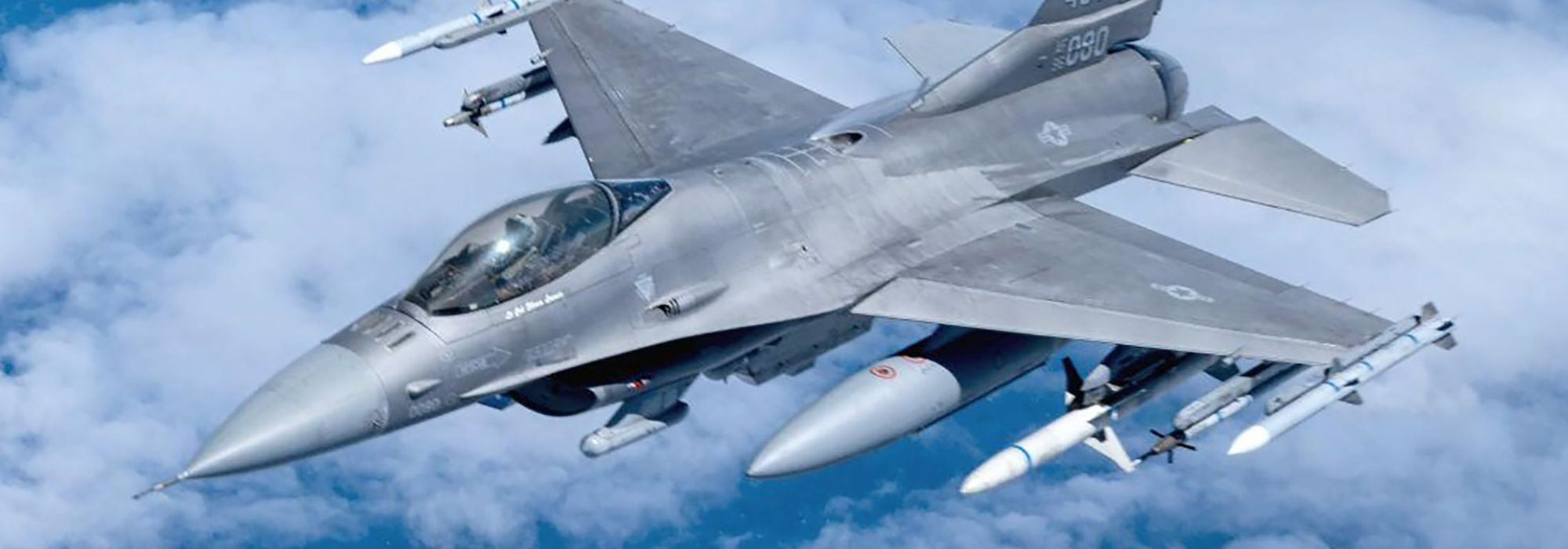Ukraine Needs U.S. Aircraft
By John A. Tirpak
The weapons the U.S. and NATO have provided Ukraine aren’t enough to reverse Russia’s invasion, and the process of providing F-16s from U.S. stocks should begin as soon as possible, analysts said in an AFA Mitchell Institute online seminar.
Panelists also said the U.S. shouldn’t fear Russia’s nuclear threats and that Vladimir Putin will invade more countries if not stopped in Ukraine.
“Time is not on our side,” said Evelyn Farkas, former assistant secretary of defense for Russia, Ukraine, and Eurasia.
“The battle for Ukraine is … not just for Ukraine … but it’s for the international order,” she said. If Russia isn’t defeated in Ukraine, “we are going to have a whole lot of trouble politically and militarily all around the world.”
Farkas noted that “winter is coming. The Russians are regrouping, and … the only way to get back at them is to use air power and to provide more assistance” to Kiev.
Panelists said Ukraine’s best chance for reversing Russia’s advances will come through air-launched standoff missile strikes on Russian rear areas and supply lines, as well as command and control centers and air power working in concert with Ukrainian ground forces.
Retired Lt. Gen. David A. Deptula, dean of AFA’s Mitchell Institute for Aerospace Studies, said the Russia-Ukraine war, underway since 2014, won’t be over quickly, so “there’s time” to provide Ukraine with F-16s and train some of its experienced pilots to fly them.
Ukrainian pilots have boasted that they could learn to fly F-16s in a couple of weeks, and Deptula said that’s not too far off the mark.
Because they are already skilled aviators, Ukrainian MiG-29 and Su-27 pilots are “looking at more of a transition course from four to six weeks,” he said. This would be enough time to get them “up to speed” on the F-16.
While no countries have offered their own F-16s for Ukraine, and Lockheed Martin has a waiting list of several years for new ones, Deptula said Congress has agreed to let the Air Force retire 48 F-16s this year. “So clearly those are surplus to U.S. needs” and could let the Ukrainians “reconstitute their air force” by the end of the year.
Mitchell scholar Heather Penney, a former F-16 pilot, said that beyond the transition training, learning to employ the fighter’s systems would take Ukrainian pilots a few months.
Until then, the U.S. could provide MQ-1C Gray Eagles or even MQ-9 Reapers to give Ukraine more airstrike capability and persistent watch over the battlefield for target spotting and “actionable intelligence,” Deptula said.
Absent fresh air power, though, panelists said weapons being supplied to Ukraine—such as artillery—don’t deliver a decisive capability to beat the Russians “at their own game,” he added.
Farkas noted that Slovakia has said it would consider giving Ukraine its MiG-29s, which Ukraine already knows how to employ.
She said Vladimir Putin “does not want war with NATO or the United States” and that his threats of going nuclear shouldn’t overly worry them. Putin knows that use of a tactical nuclear weapon “would be the quickest way to get us directly involved” in the war, she said.
While Putin doesn’t want a second front with NATO, “if he prevails … and gets some kind of compromise with Ukraine, some kind of stalemate … he will turn to the Baltic States next,” she said. “He will use as an excuse access to Kaliningrad, and he will definitely press and probe our defenses.”
Putin is paying a heavy cost in troops, equipment, and sanctions, but doesn’t yet face strong domestic opposition over Ukraine, Farkas pointed out. That could change if he must order a nationwide draft and his people face a wave of body bags returning from the West.
“They might then say, ‘This is not our war,’” Farkas asserted, and Russian leaders would face domestic unrest such as during its own Aghanistan War.
Ukraine also needs more naval capability to keep its remaining ports open, and panelists urged providing more aircraft that can launch anti-ship missiles, such as U.S. Harpoons already given.
Seth Jones of the Center for Strategic and International Studies said the U.S. should have a clearly defined goal for the outcomes it wants from the Ukraine crisis.
“There have been … vague comments about weakening the Russians,” he said, but the U.S. and its allies should provide enough military assistance to “blunt Russian advances, retake territory, and bog the Russians down in a campaign much like what they faced in Afghanistan,” which would cause them a loss “domestically.”
The weapons already provided—such as Stingers, Javelin anti-tank missiles, artillery, and old vehicles—won’t achieve those objectives, Jones said. Instead, Ukraine “needs systems to target dug-in Russian ground forces.” Besides higher-end unmanned aircraft, Jones said main battle tanks and medium- to long-range standoff missiles are needed.
“I see too much reticence right now” on the part of NATO leaders about Russian escalation, he added. “Those concerns have been exaggerated.”
Jones said Russia’s strategy so far requires that “they put their ground forces in vulnerable positions.” Those forces have shown that “they’re not very good, with significant problems of corruption, morale, training, leadership, [and] logistics” and so would be vulnerable to air attack. “So a much more significant … sustained air campaign” is in order for Ukraine.
Clark said Russia has an advantage in that it has developed “rungs on the escalation ladder” from use of mercenaries all the way up to nuclear weapons. The West should emulate that to blunt Russia’s seeming veto power over greater Western involvement in Ukraine.
“We must accept more risk,” Farkas said. “History shows … if you can’t stop a leader like Hitler in the first phase, you’re going to face worse” later. Putin has shown that he will back down when confronted by resolve and “firmness,” she said.
But “we’re playing it too safe,” she said. “We are too worried about Russian escalation, and we shouldn’t be.”
